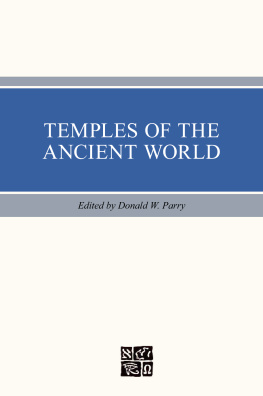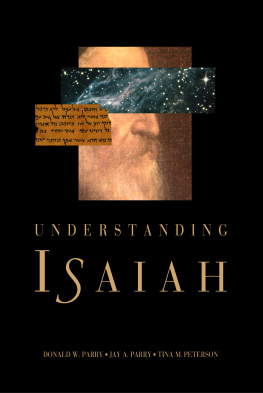Donald W. Parry - Temples of the Ancient World: Ritual and Symbolism
Here you can read online Donald W. Parry - Temples of the Ancient World: Ritual and Symbolism full text of the book (entire story) in english for free. Download pdf and epub, get meaning, cover and reviews about this ebook. year: 1994, publisher: Deseret Book Company, genre: Religion. Description of the work, (preface) as well as reviews are available. Best literature library LitArk.com created for fans of good reading and offers a wide selection of genres:
Romance novel
Science fiction
Adventure
Detective
Science
History
Home and family
Prose
Art
Politics
Computer
Non-fiction
Religion
Business
Children
Humor
Choose a favorite category and find really read worthwhile books. Enjoy immersion in the world of imagination, feel the emotions of the characters or learn something new for yourself, make an fascinating discovery.
- Book:Temples of the Ancient World: Ritual and Symbolism
- Author:
- Publisher:Deseret Book Company
- Genre:
- Year:1994
- Rating:4 / 5
- Favourites:Add to favourites
- Your mark:
Temples of the Ancient World: Ritual and Symbolism: summary, description and annotation
We offer to read an annotation, description, summary or preface (depends on what the author of the book "Temples of the Ancient World: Ritual and Symbolism" wrote himself). If you haven't found the necessary information about the book — write in the comments, we will try to find it.
Three essays by Hugh Nibley, plus papers presented at the 1993 FARMS symposium, other important papers on the temple, a keynote address by Elder Marion D. Hanks (former president of the Salt Lake Temple), striking illustrations by Michael Lyon (who illustrated Nibleys Temple and Cosmos) -- these features and more make Temples of the Ancient World: Ritual and Symbolism one of the most significant volumes ever published on the temple. Twenty-four essays in this 1994 publication focus on the temple in the Hebrew Bible and ancient Near East, the New Testament, Jewish writings, and the Book of Mormon and ancient America.
805 pp., hardbound.
Donald W. Parry: author's other books
Who wrote Temples of the Ancient World: Ritual and Symbolism? Find out the surname, the name of the author of the book and a list of all author's works by series.















